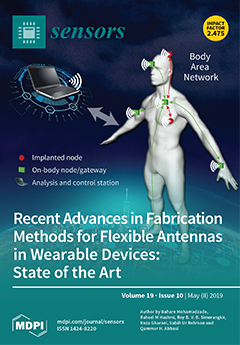In this work, we investigated the sensing performance of epitaxial graphene on Si-face 4H-SiC (EG/SiC) for liquid-phase detection of heavy metals (e.g., Pb and Cd), showing fast and stable response and low detection limit. The sensing platform proposed includes 3D-printed microfluidic devices, which
[...] Read more.
In this work, we investigated the sensing performance of epitaxial graphene on Si-face 4H-SiC (EG/SiC) for liquid-phase detection of heavy metals (e.g., Pb and Cd), showing fast and stable response and low detection limit. The sensing platform proposed includes 3D-printed microfluidic devices, which incorporate all features required to connect and execute lab-on-chip (LOC) functions. The obtained results indicate that EG exhibits excellent sensing activity towards Pb and Cd ions. Several concentrations of Pb
2+ solutions, ranging from 125 nM to 500 µM, were analyzed showing Langmuir correlation between signal and Pb
2+ concentrations, good stability, and reproducibility over time. Upon the simultaneous presence of both metals, sensor response is dominated by Pb
2+ rather than Cd
2+ ions. To explain the sensing mechanisms and difference in adsorption behavior of Pb
2+ and Cd
2+ ions on EG in water-based solutions, we performed van-der-Waals (vdW)-corrected density functional theory (DFT) calculations and non-covalent interaction (NCI) analysis, extended charge decomposition analysis (ECDA), and topological analysis. We demonstrated that Pb
2+ and Cd
2+ ions act as electron-acceptors, enhancing hole conductivity of EG, due to charge transfer from graphene to metal ions, and Pb
2+ ions have preferential ability to binding with graphene over cadmium. Electrochemical measurements confirmed the conductometric results, which additionally indicate that EG is more sensitive to lead than to cadmium.
Full article






